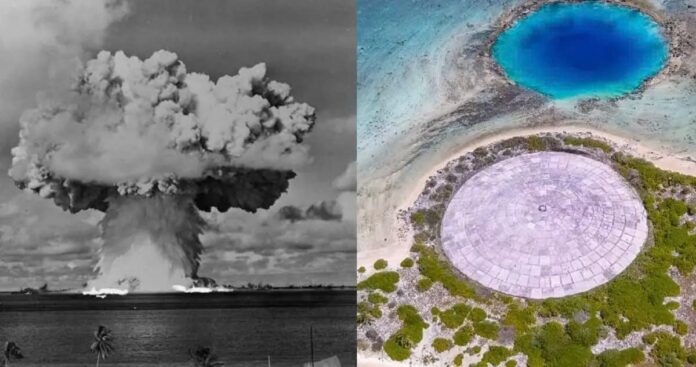The Cold War’s Toxic Monument in the Marshall Islands
A Concrete Tomb for Nuclear Waste
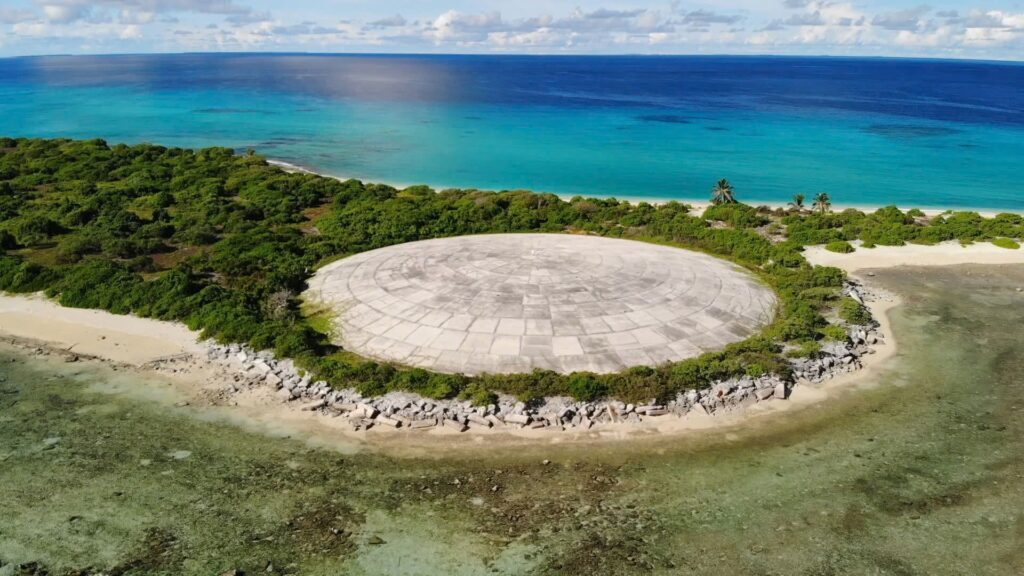
In the heart of the Pacific Ocean, nestled among the idyllic Marshall Islands, stands a sinister reminder of the Cold War era – the Runit Dome. Built between 1977 and 1980, this massive concrete structure, nicknamed “The Tomb,” was designed to contain radioactive waste from U.S. nuclear tests. However, as time passes, this containment solution is becoming a ticking time bomb.
The Marshall Islands: America’s Nuclear Playground
From Paradise to Testing Ground
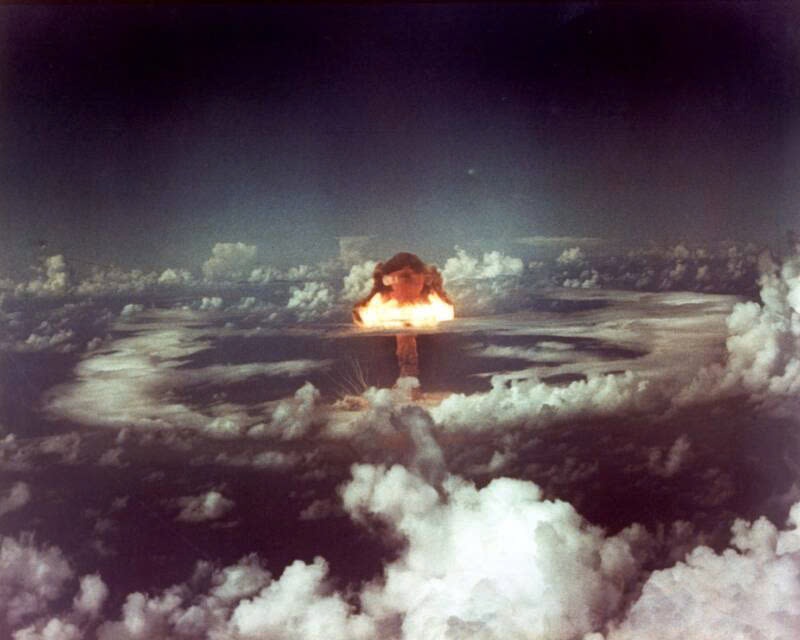
In the mid-20th century, the U.S. government saw the remote Marshall Islands as the perfect location for nuclear testing. From 1946 to 1958, 67 nuclear and atmospheric tests scarred the atolls of Enewetak and Bikini. The most notorious was Castle Bravo, a hydrogen bomb 1,000 times more powerful than those used on Hiroshima and Nagasaki.
The Nuclear Arms Race Intensifies
As Cold War tensions escalated, so did the testing. In 1958 alone, 33 bombs were detonated over a few months. While the 1963 Limited Test Ban Treaty curbed atmospheric tests, underground and biological testing continued into the 1960s.
The Birth of a Concrete Monster
A Flawed Clean-up Attempt

By the 1970s, the devastating effects of nuclear testing were undeniable. Facing pressure from islanders, the U.S. government began a clean-up process. Their solution? Burying radioactive debris in a crater on Runit Island and sealing it with a concrete dome. U.S. servicemen who built the dome later reported severe health issues from radiation exposure.
A Ticking Time Bomb
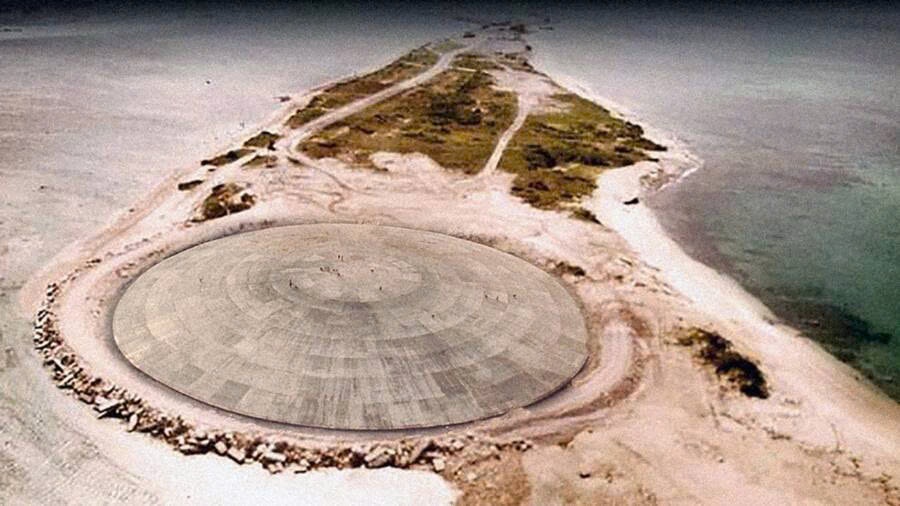
Today, the Runit Dome stands as a grim monument to nuclear folly. With cracks appearing and climate change threatening its integrity, the dome poses a potential catastrophe. If breached, it could release radioactive material into the Pacific Ocean, endangering local communities and marine ecosystems.
The Human Cost of Nuclear Ambition
Voices from Ground Zero
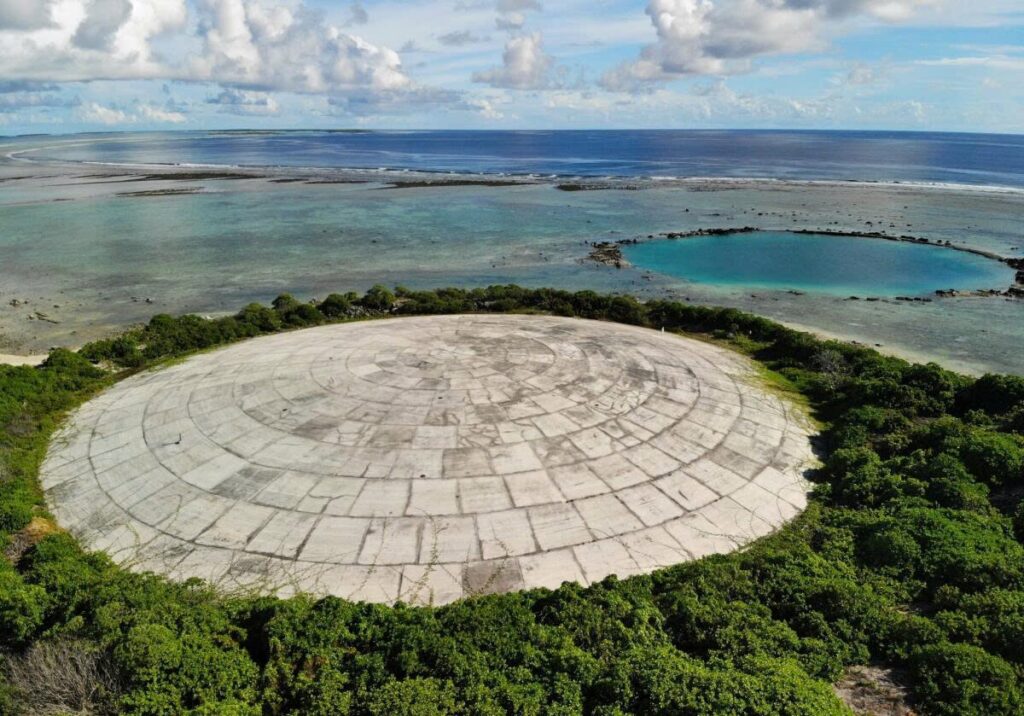
The Runit Dome’s story is intertwined with the lives of the Marshallese people. Survivors like Nerje Joseph, who witnessed the Castle Bravo detonation as a child, have lived with the consequences for decades. The tests disrupted traditional ways of life and left a legacy of health issues.
A Call for Global Action
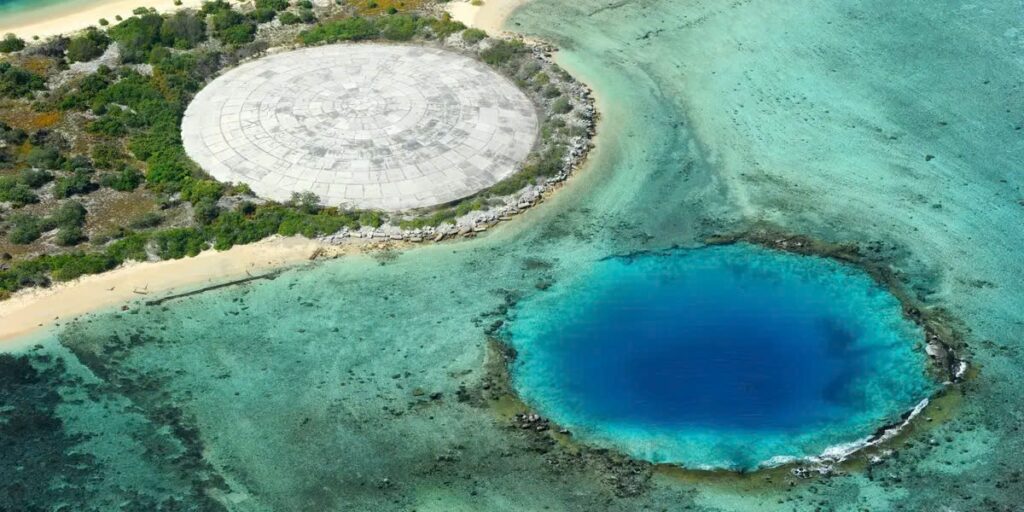
The Runit Dome is more than a decaying structure; it’s a symbol of historical injustice and environmental negligence. As climate change threatens to exacerbate the situation, the international community must act. The dome’s story underscores the long-lasting impacts of nuclear testing and the urgent need for collective action to address past wrongs and protect future generations.
